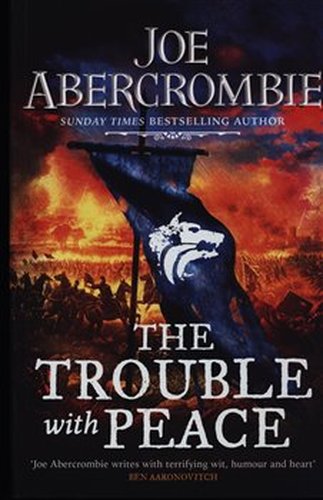

Those who want to overthrow the old order because it is bloated and corrupt and backed by Bayaz, whom we know through seven previous novels is not a particularly trustworthy guy, have some excellent points, but those who want a continuation of peace, not sticking swords through people and undertaking more gradual reforms also have a point (and Bayaz may be a ruthless and untrustworthy git, but he also did kind of save the Union from a far greater evil in the original trilogy, from a certain point of view), and seeing the two sides come to blows is decidedly painful.Īs the novel unfolds there are traditional shocks and surprises, abrupt reversals of fortune, dramatic falls from grace and sudden elevations to grace. Characters choose sides for logical reasons and the reader's sympathies may be tested because it's hard to say who is in the right and who is in the wrong. One of the most remarkable things about it is that it opens a yawning chasm between the characters who were (more or less) on the same side of things in the first volume. The result is one of Abercrombie's strongest novels to date, a story of politics and war and the individuals swept up in events. A Little Hatred was the prelude to a much bigger story, which not only begins in The Trouble with Peace but feels like it climaxes, with a surprising amount of closure before the last chapter blows open the story again for the grand conclusion.

In just under 500 pages, Abercrombie delivers us a tense election in Westport, political machinations in Styria, fuming discontent over refugees in Midderland, yet more political chaos in Adua, a quest by a brave band of Northmen (and two women) to find a sorceress, more economic and technological advancements in the Union crushing the little people underfoot, and whispered conspiracies in dark corners that eventually lead to a huge conflagration. If A Little Hatred was a bit more small-scale than what we are used to from Abercrombie, focusing mainly on politics in Adua, civil discontent in Valbeck and yet more violence in the North (well-handled, but it feels like that plot well has been visited quite a few times already), The Trouble with Peace expands the scope considerably. The Trouble with Peace builds on those foundations with a surprisingly epic novel.

A Little Hatred set up the characters and reintroduced us to the world some thirty years on from the events of the original trilogy and three stand-alone follow-ups, and focused on a series of somewhat self-contained storylines to introduce us to the new core cast of characters. In the case of The Age of Madness, the second trilogy set in Joe Abercrombie's First Law world, the work justifies the length. All too often they consist of a great opening volume and a solid conclusion, but where the middle book exists mainly to pad out the wordcount. Trilogies can be a tricky structure to pull off.


 0 kommentar(er)
0 kommentar(er)
